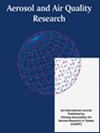2000-2050年中国东部地区HCFC-141b (CH3CCl2F)排放估算
IF 2.5
4区 环境科学与生态学
Q3 ENVIRONMENTAL SCIENCES
引用次数: 0
摘要
HCFC-141b (ch3ccl2f)对臭氧消耗和气候变化具有双重环境影响,其臭氧消耗潜势为0.11,全球变暖潜势为782,其排放受到国际关注。在《蒙特利尔议定书》的控制下,中国应在2030年前逐步淘汰HCFC-141b的生产和消费。本研究首先采用自下而上的方法估算了2000-2019年中国东部地区HCFC-141b的排放量。结果表明,中国东部地区HCFC-141b排放量从2000年的0.4 Gg / yr -1增加到2019年的7.1 Gg / yr -1, 2019年PU泡沫制品中存在253.6 Gg的库,这可能对未来HCFC-141b排放产生影响。在基线情景(BAU)、《蒙特利尔议定书》情景(MP)和加速淘汰情景(AP)下,对2020-2050年中国东部地区HCFC-141b的排放进行了预测,并对其排放潜力进行了分析。结果表明:BAU情景下HCFC-141b排放量快速增加,2020-2050年累计排放量为1162.6 Gg;在MP和AP情景下,2020 - 2050年HCFC-141b累计减排潜力分别为1002.1 Gg(相当于110.2 Gg cfc -11 eq和783.6 Tg CO 2 -eq)和1034.8 Gg(相当于113.8 Gg cfc -11 eq和809.2 Tg CO 2 -eq)。与MP情景相比,AP情景下,2020-2050年中国东部地区将额外获得32.7 Gg(相当于3.6 Gg CFC-11-eq和25.5 Tg co2 -eq)的减排潜力,将对保护臭氧层和减缓气候变化做出更大的贡献。本文章由计算机程序翻译,如有差异,请以英文原文为准。
HCFC-141b (CH3CCl2F) Emission Estimates for 2000–2050 in Eastern China
HCFC-141b (CH 3 CCl 2 F) has dual environmental impacts on ozone depletion and climate change, with the ozone depletion potential of 0.11 and the global warming potential of 782, and its emissions has attracted international attention. Under the control of the Montreal Protocol, China should phase out the production and consumption of HCFC-141b by 2030. This study firstly estimated the HCFC-141b emissions in eastern China based on the bottom-up method during 2000-2019. The results show that the HCFC-141b emissions in eastern China increased from 0.4 Gg yr –1 in 2000 to 7.1 Gg yr –1 in 2019, and there was a bank of 253.6 Gg in PU foam products in 2019, which may have an impact on the future HCFC-141b emissions. In addition, the HCFC-141b emissions were predicted in eastern China from 2020–2050 under the baseline scenario (BAU), the Montreal Protocol scenario (MP), and the accelerated phase-out scenario (AP), and the emission potential was analyzed. The results show that the HCFC-141b emissions increased rapidly under the BAU scenario, with the cumulative emissions of 1162.6 Gg in 2020–2050. Under the MP and AP scenarios, the cumulative HCFC-141b emission reduction potential from 2020 to 2050 will be 1002.1 Gg (equivalent to 110.2 Gg CFC-11-eq and 783.6 Tg CO 2 -eq) and 1034.8 Gg (equivalent to 113.8 Gg CFC-11-eq and 809.2 Tg CO 2 -eq), respectively. Compared with the MP scenario, under the AP scenario, eastern China will get an additional emission reduction potential of 32.7 Gg (equivalent to 3.6 Gg CFC-11-eq and 25.5 Tg CO 2 -eq) during 2020–2050, which will make greater contributions to protecting the ozone layer and mitigating climate change.
求助全文
通过发布文献求助,成功后即可免费获取论文全文。
去求助
来源期刊

Aerosol and Air Quality Research
ENVIRONMENTAL SCIENCES-
CiteScore
8.30
自引率
10.00%
发文量
163
审稿时长
3 months
期刊介绍:
The international journal of Aerosol and Air Quality Research (AAQR) covers all aspects of aerosol science and technology, atmospheric science and air quality related issues. It encompasses a multi-disciplinary field, including:
- Aerosol, air quality, atmospheric chemistry and global change;
- Air toxics (hazardous air pollutants (HAPs), persistent organic pollutants (POPs)) - Sources, control, transport and fate, human exposure;
- Nanoparticle and nanotechnology;
- Sources, combustion, thermal decomposition, emission, properties, behavior, formation, transport, deposition, measurement and analysis;
- Effects on the environments;
- Air quality and human health;
- Bioaerosols;
- Indoor air quality;
- Energy and air pollution;
- Pollution control technologies;
- Invention and improvement of sampling instruments and technologies;
- Optical/radiative properties and remote sensing;
- Carbon dioxide emission, capture, storage and utilization; novel methods for the reduction of carbon dioxide emission;
- Other topics related to aerosol and air quality.
 求助内容:
求助内容: 应助结果提醒方式:
应助结果提醒方式:


